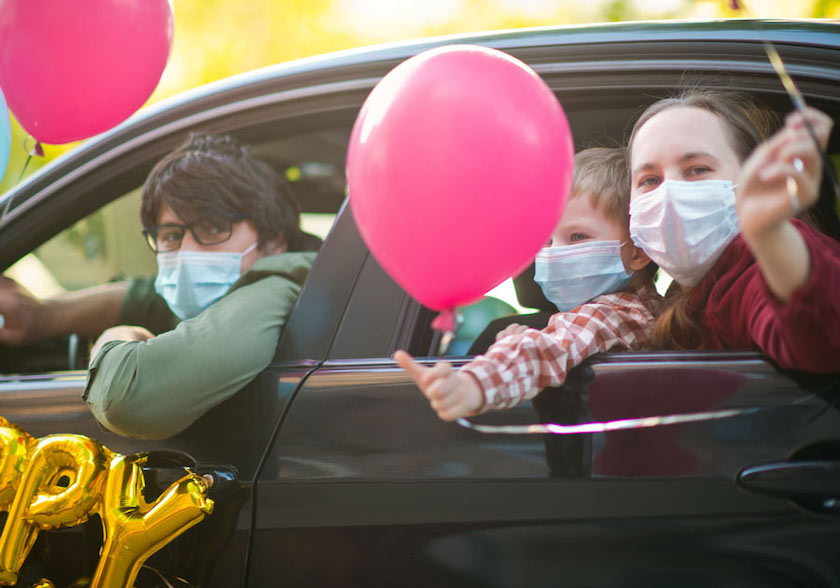Cars have always been a symbol of freedom. That has never been truer than during the coronavirus pandemic, which caused public transportation ridership to fall up to 90 percent in some places. But cars let in harmful ultraviolet (UV) radiation from the sun, and The Skin Cancer Foundation is here to remind you that even inside of your vehicle, it’s important to practice good sun protection habits.
In this era of social distancing, many people are relying on their cars to provide a safe haven from COVID-19. Besides driving for necessary errands, people are using cars in innovative ways to celebrate together while staying safely apart. Spring 2020 showed an increase in curbside pickups plus the adoption of drive-by graduation ceremonies, birthday parties, visits to loved ones, drive-in church services and the return of drive-in movies. Some are spending hours in their cars with the windows down in the parking lots of schools, libraries and cafés for access to internet speeds they don’t have at home.
While cars may help keep you safe from exposure to airborne viruses, they do not protect you from the sun’s harmful ultraviolet (UV) rays. If you don’t step out of your car or even roll down the window, you can still be bombarded.
There are two types of UV radiation from the sun that cause damage that can lead to skin cancer: UVB rays, which mainly cause sunburn, and UVA rays, which mainly cause tanning and premature aging. All glass windows block UVB radiation fairly well. Windshields are made of a laminated glass that can block over 90 percent of UVA radiation, too. However, untreated side windows and sunroofs are typically made of tempered glass so they shatter easily to protect you in case of a crash. Up to 50 percent of UVA radiation can penetrate this glass and reach your exposed skin.
In the U.S., melanoma and nonmelanoma skin cancers are more common on the left side, since drivers are most directly exposed through a window on their left side, and drivers are more common than passengers.
A broad-spectrum sunscreen (with at least SPF 30 for short drives and SPF 50 or higher for longer exposures), along with other measures such as wearing long sleeves and sunglasses, can help reduce your risk of skin cancer. You can also check local regulations to see if you are allowed to add window film or tinting to your car windows. Some window film carries The Skin Cancer Foundation Seal of Recommendation, and you can find these products and more on the Sun Protection Product Finder.
Don’t forget that the sun’s radiation reaches you year-round, not just in the spring and summer. About 90 percent of holiday travel is in cars, and with the average distance traveled more than 200 miles, the exposure adds up!





